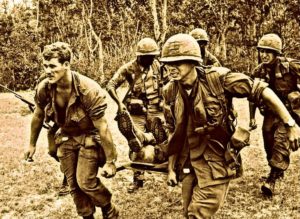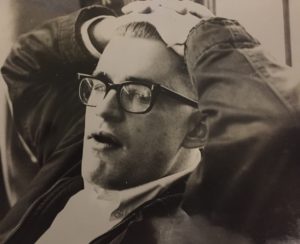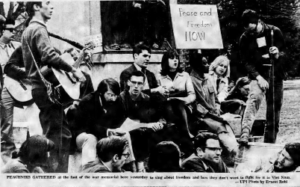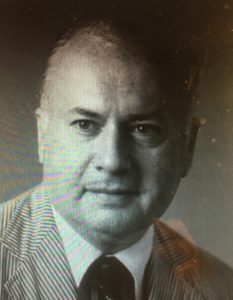
Bob Quincy, the director of sports information at University of North Carolina and my boss for three years when I was a student there, did not like Coach Dean Smith messing with the basketball brochure, telling him, in effect, how to do his job.
For those of you who are not from around here, Smith, who coached UNC from 1961 to 1997, was one of the best basketball coaches that ever was or ever will be. Maybe The Best.
Oh, I know. Some of you are saying, “Huh? What about Mike Krzyzewski? Duke’s Hall of Fame coach.”
What about him?
Coach K is a terrific coach, no doubt about that, and his won-lost record against Smith proves it: Coach K won 14, lost only 24 against Coach Smith, a winning percentage of 36.8. Beating Coach Smith a little over a third of the time is a sign of greatness.
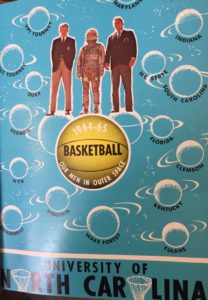
Every year the UNC Sports Information Office published brochures about the various Tar Heel athletic teams –including the schedule of games, thumbnail sketches of players and coaches, individual and team statistics, information about opponents, and so forth.
Quincy compiled the brochures that mattered, like football and basketball, and, as his student assistant, I did the brochures that didn’t matter all that much, like swimming and cross country.
When Quincy began working on the 1964-65 basketball brochure Coach Smith told him he wanted some changes. Bob couldn’t deal with that so he sent me to see the coach. My instructions were simple: Go, ask, and come back with a list.
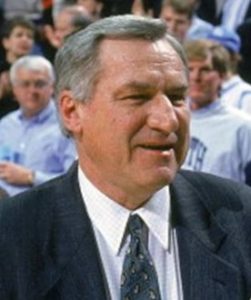
Coach Smith was as nice and polite as could be to me. We sat at a table in his office. He offered me a soft drink. He complimented Quincy on what a good job he had done on the last basketball brochure. And then he began telling me the changes he had in mind, and there were lots of them. It seemed like no detail had escaped his attention.
One change stuck out because it seem so odd; Smith wanted the thumbnail sketch of an assistant coach named Donnie Walsh to say he was a Catholic. Walsh, a former UNC star, was working part-time, helping coach the junior varsity basketball team while he went to law school.
I wasn’t there to question the changes the coach wanted but I asked anyway, “Why?”
Coach Smith said he used the basketball brochure as a recruiting tool, that he sent it to the families of prospects. He told me, words to this effect: “I’m a Southern Baptist but some of the boys I’m recruiting are Catholic. I want their parents to know that Coach Walsh is a Catholic, too, and that he’ll have their boy in mass every Sunday.”
Postscript: Quincy did not include the Catholic identification in Walsh’s bio in the 1964-65 UNC basketball brochure. I don’t know why. Maybe Coach Smith changed his mind. Maybe the omission was accidental. More likely, Quincy, who had a temper, just got his back up and didn’t do it.
NOTE: By the way, while researching this post at UNC’s Louis Round Wilson Library I came across a UNC Athletic Department payroll. Would you like to guess how much UNC paid Coach Smith in 1965-66?
His salary was $12,000 a year — $97,263 in 2018 dollars.
And how much is Roy William, the current UNC basketball coach, paid? According to a story today in The News & Observer, Williams’ total compensation, including his Nike “shoe contract” and other outside income, is at least $3.9 million — 40 times the salary UNC paid Smith. William could also earn another $1.04 million in bonuses.
[For most of Smith’s career his teams wore Converse shoes. Did Smith have a Converse “shoe contract” in 1965-66? I don’t know. I doubt it.]
Is the fair to compare Smith’s salary, when he was just getting started, with Williams, who is nearing the end of a outstanding career.
No, it isn’t. But Williams isn’t being paid twice what Smith was paid. Or three or four times. Williams earns 40 times as much, which seems a little excessive. And compared to other top coaches in the country, like Krzyzewski, Williams is underpaid.
Coming Monday: The Ouija Board
